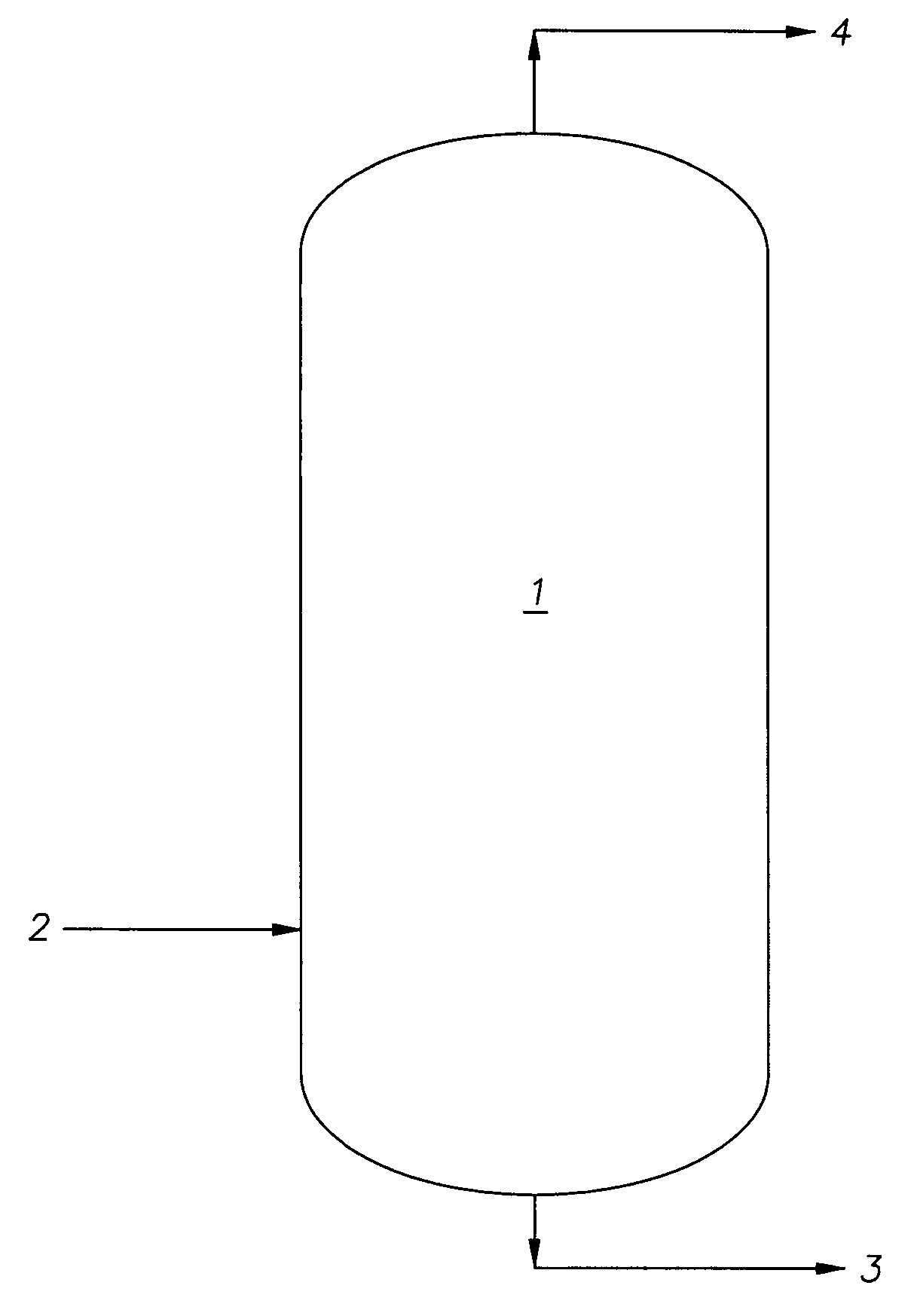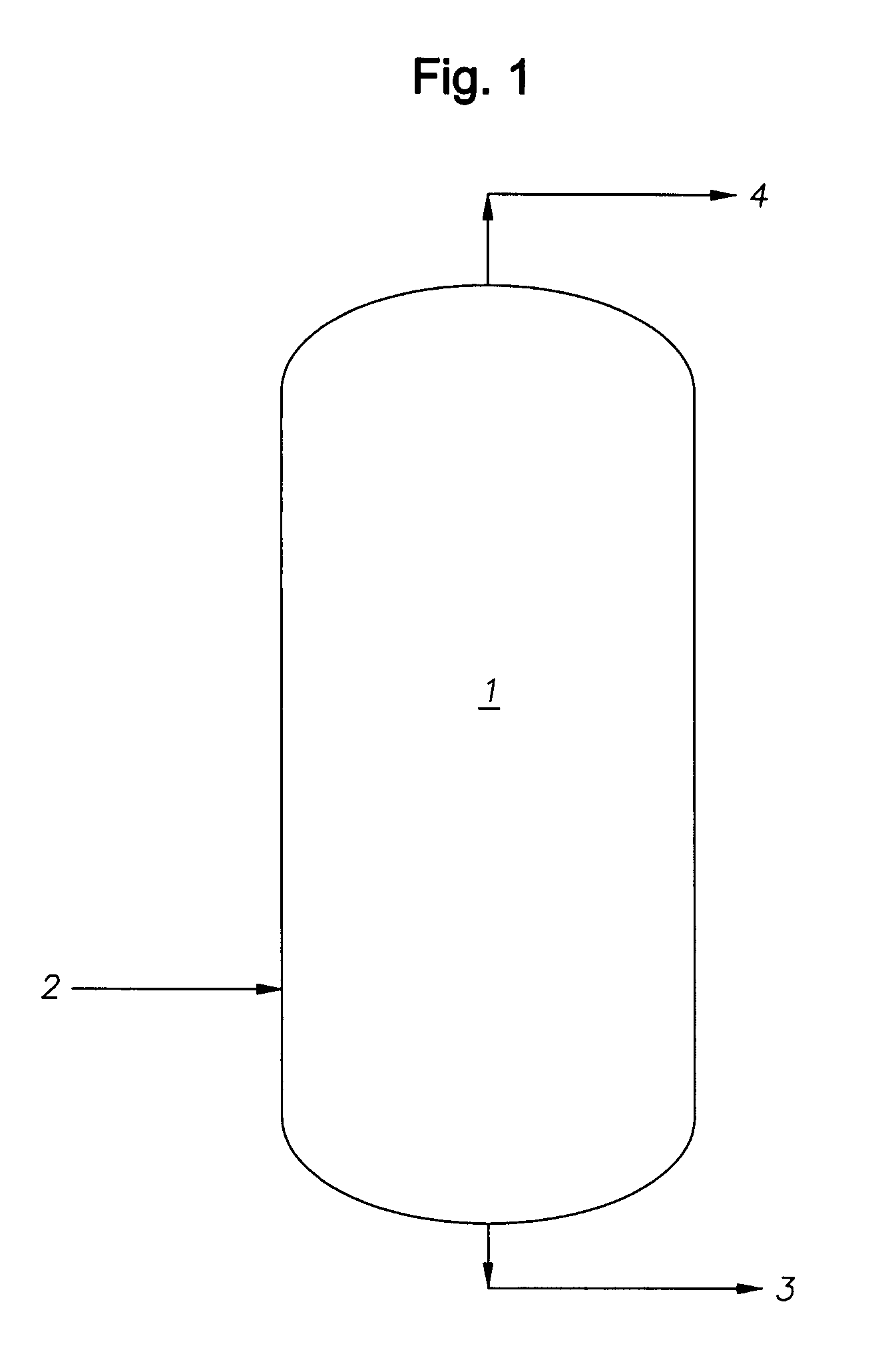Upgrading of tar using POX/coker
a technology of pox/coker and tar, which is applied in the direction of tar working up by chemical refining, thermal non-catalytic cracking, and separation processes, etc. it can solve the problems of increasing the difficulty of disposing, increasing the amount of tar produced, and tending to be incompatible with sct, so as to reduce or eliminate the need
- Summary
- Abstract
- Description
- Claims
- Application Information
AI Technical Summary
Benefits of technology
Problems solved by technology
Method used
Image
Examples
Embodiment Construction
[0024]According to the invention steam cracker tar is treated by a method comprising feeding steam cracker tar to a vacuum pipestill (VPS), wherein it is separated into various fractions including an overhead comprising a deasphalted tar product and as a bottoms product a heavy tar asphaltenic product, the latter being upgraded in a POX and / or coker unit.
[0025]The invention also concerns an integrated system comprising, in series and in fluid connection, a pyrolysis furnace, a primary fractionator whereby tar is obtained as a bottoms product, a vacuum pipestill, and at least one of a POX unit and a coker unit.
[0026]Crude, as used herein, means whole crude oil as it issues from a wellhead, optionally including a step of desalting and / or other steps as may be necessary to render it acceptable for conventional distillation in a refinery. Crude as used herein is presumed to contain resid unless otherwise specified.
[0027]The terms thermal pyrolysis unit, pyrolysis furnace, steam cracker ...
PUM
| Property | Measurement | Unit |
|---|---|---|
| boiling point | aaaaa | aaaaa |
| pressure | aaaaa | aaaaa |
| temperature | aaaaa | aaaaa |
Abstract
Description
Claims
Application Information
 Login to View More
Login to View More - R&D
- Intellectual Property
- Life Sciences
- Materials
- Tech Scout
- Unparalleled Data Quality
- Higher Quality Content
- 60% Fewer Hallucinations
Browse by: Latest US Patents, China's latest patents, Technical Efficacy Thesaurus, Application Domain, Technology Topic, Popular Technical Reports.
© 2025 PatSnap. All rights reserved.Legal|Privacy policy|Modern Slavery Act Transparency Statement|Sitemap|About US| Contact US: help@patsnap.com


